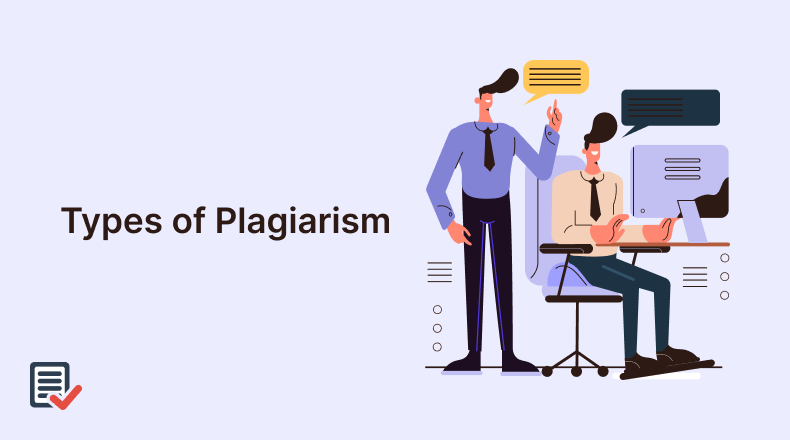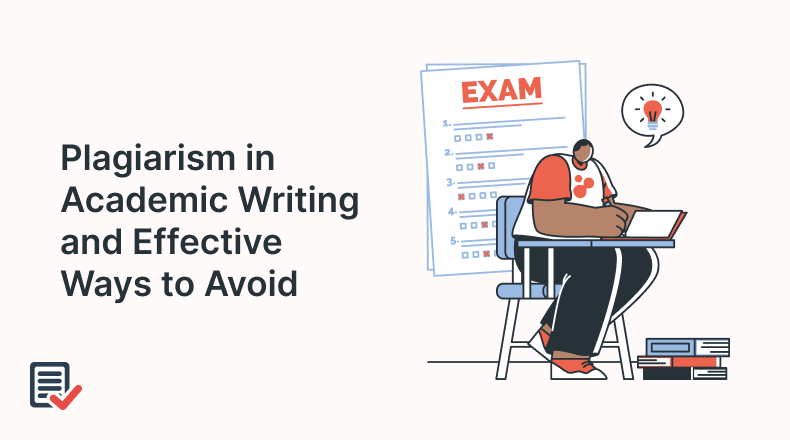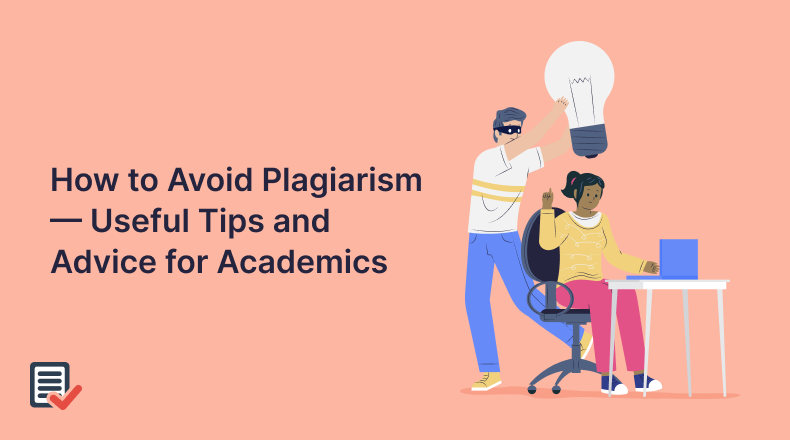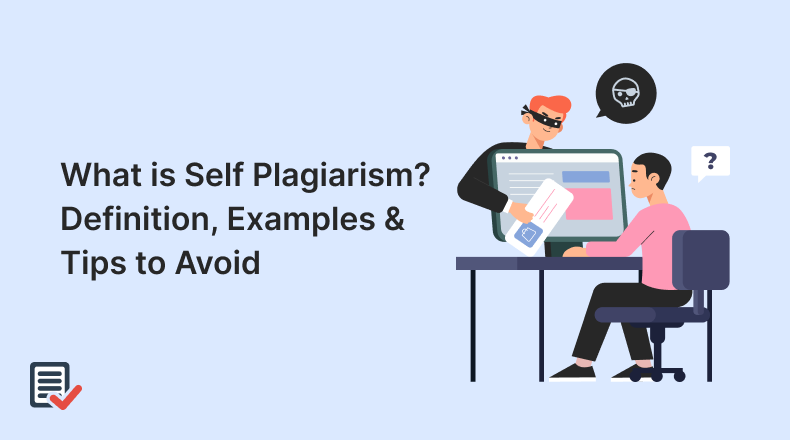
As per the situation and severity of the plagiarism. Plagiarism is categorized into the following categories.
Some of the well-known types are listed below:
- Full Plagiarism
- Paraphrasing Plagiarism
- Mosaic Plagiarism
- Self-plagiarism
- Inaccurate citation
- Accidental plagiarism
All of these types refer to stealing someone else’s content but have some differences according to the situation.
1. Full Plagiarism
Full Plagiarism is also known as Complete Plagiarism. This is one severe type of plagiarism that involves stealing intellectual property and in this type of plagiarism, the writer makes no changes in the text and represents it as their own property.
A person can’t differentiate anything as the punctuation, the language, and the writing style are copied to such an extent there is no difference left behind between the two texts.
In other words, full plagiarism involves stealing someone’s work by copying word for word without any original content involved by the writer. This practice is usually done by people lacking interest or knowledge in a particular subject, and not performing a plagiarism test while writing.
Most of these people are students as they copy-paste when they run out of ideas and words to jump-start their work.
This kind of plagiarism may lead to serious consequences which can range from suspension to termination, if Academic Integrity is not taken into consideration while writing.
Original: Adaptation is an international, peer-reviewed journal, offering academic articles, film and book reviews (including both book-to-screen adaptations and screen-to-book adaptations), popular and ‘classic’ adaptations, theatre and novel screen adaptations, television, animation, soundtracks, production issues and genres in the literature on screen.
By Writer: Adaptation is an international, peer-reviewed journal, offering academic articles, film and book reviews (including both book-to-screen adaptations and screen-to-book adaptations), popular and ‘classic’ adaptations, theatre and novel screen adaptations, television, animation, soundtracks, production issues and genres in the literature on screen.
There is no difference between both. Just copy and paste, and this is complete plagiarism.
2. Paraphrasing Plagiarism
Paraphrasing, to some extent, refers to summarizing some text, but in reality, it has some differences. Paraphrasing content is to alter some words but keep the idea of the text the same. This may look original text but also involves plagiarism as the idea is not changed, you are using someone else’s idea in your text. To avoid paraphrasing plagiarism, only use an advanced and quality paraphrasing tool.
The underlined words and sentences are those that are altered to make the text look more appropriate and for an easy understanding of the main idea. This text may not look plagiarized as a change of words and altering of sentences makes it look unique to some extent but not quoting the source will cause plagiarism.
If used properly, paraphrasing a text is a great technique to understand a concept by using your own words and phrases but keeping the idea the same. Paraphrasing is mostly used to avoid quotations but the actual use is to express someone’s idea in your own words in case you think the original idea needs some changes before quoting. Most importantly quoting is necessary. As an example;
Original: Any trip to Italy should include a visit to Tuscany to sample the region’s exquisite wines.
Correctly paraphrased: Make sure to visit Tuscany to witness a wine-tasting experience when visiting Italy.
Wrongly paraphrased: any trip to Italy should also include a visit to Tuscany to experience wine in the region.
Wrong paraphrasing involves copying more than three words and not changing the original work more appropriately in your own words. Copying more than two words must be cited; otherwise, it will be alleged plagiarism.
3. Mosaic Plagiarism
As compared to others this type is a more sophisticated one. Phrases and terms are lifted from the source and joined together with one own prose. Words and phrases lifted from the source are slightly changed and use italic style to make them different from the source.
In addition, mosaic plagiarism occurs when someone changes the structure of a sentence but keeps the original wording the same. This results in changing the flow and style of the text, but the words remain the same as compared with the source. This act of altering sentence structure counts as plagiarism because it does not give credit to the source of the text. Mosaic plagiarism can easily be removed by using an online plagiarism checker.
Giving credit is quite important in such cases. Any person doing this needs to have proper knowledge of giving citations to the source to avoid any chances of plagiarism. Mostly students lacking knowledge and understanding do this to get rid of their work in less time with ease.
Original: The Philippines has a complicated relationship with China. Things got a little better when Rodrigo Duterte became president of the Philippines.
Plagiarized: Things got a little better when Rodrigo Duterte became president of the Philippines. However, the Philippines has a complicated relationship with China.
4. Self-Plagiarism
Self-plagiarism is quite often happening when running out of ideas using the help of your previous text is a good option rather than getting help from other sources. However, this counts as plagiarism as well when you copy your text and don’t cite it properly. Yes, you have to cite your text as well; otherwise, plagiarism will cause problems for your site or blogs.
This is referred to as plagiarism as the reader is not aware that the text he is reading is already published somewhere else as well. Different people have mixed opinions over this contested type of plagiarism, whether considering it plagiarism or not. Whether copying partially or fully from your previous content doesn’t matter. Publishing the same content on different platforms of media or sites will ultimately cause self-plagiarism if not cited properly. It is often found in numerous writers in different fields.
According to Professor Paul Brian’s opinion posted on the Internet Humanist Forum:
“Self-plagiarism or the recycling of old work in a new guise is also a theft since the author leads the book-buyer to think that there is a new book of his in the market. The author is misleading his/her readers. Self-plagiarism is fraud, if not outright theft.”
5. Inaccurate Citation
Citing a source is significantly important if using someone else’s work. Inaccurate citation is also known as Error 404 plagiarism. The correct citation is to specify a source in a bibliography, using a text link or footnote. You might have gone through some pages that show Error 404.
To avoid plagiarism, you should cite the primary source, and if you don’t know about the primary source, you should clearly show that the text is taken from another source.
Inaccurate citation means if a person refers to a null or inaccurate source that doesn’t even exist and this will contribute to plagiarism as well. If you have taken something from two sources, i.e., primary and secondary, you must cite both.
However not giving a link to the secondary source, plagiarism may still occur.
6. Accidental Plagiarism
Also known as unintentional plagiarism. Plagiarism in every situation has the same consequences whether done intentionally or unintentionally. This type of plagiarism is mostly found in the world of academia. It can be avoided by using a plagiarism detector tool.
Students often get accused of this type of plagiarism even if they do not intend to do it, it will still affect their careers. This often happens due to not having the proper knowledge and unintended paraphrasing can lead them to plagiarism.
Institutions should take measures to avoid this kind of plagiarism as most of the time students are found doing accidental plagiarism as compared to other writers.







